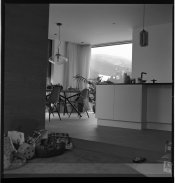Hi guys,
I just developed my first roll Kodak TriX400 after 6 years.
Most of my negatives looks good but too dark. I did a lot of film testing 6 years ago and find the best development time for 9:45 - this time was just calculated by an excelsheet (from the Book Lambrecht Way beyond Monochrome).
I metered at 320 and had a development time for 9:45 min (Kodak D76 1:1 , 20,5°C).
Should I meter at 200 or should I shorten the development time ?
Any tipps for me ?
THX
I just developed my first roll Kodak TriX400 after 6 years.
Most of my negatives looks good but too dark. I did a lot of film testing 6 years ago and find the best development time for 9:45 - this time was just calculated by an excelsheet (from the Book Lambrecht Way beyond Monochrome).
I metered at 320 and had a development time for 9:45 min (Kodak D76 1:1 , 20,5°C).
Should I meter at 200 or should I shorten the development time ?
Any tipps for me ?
THX
Last edited:




